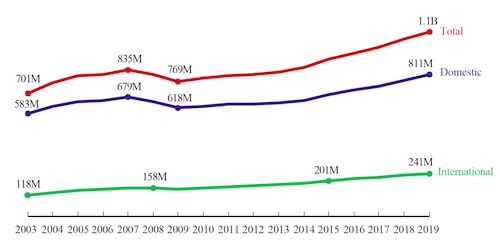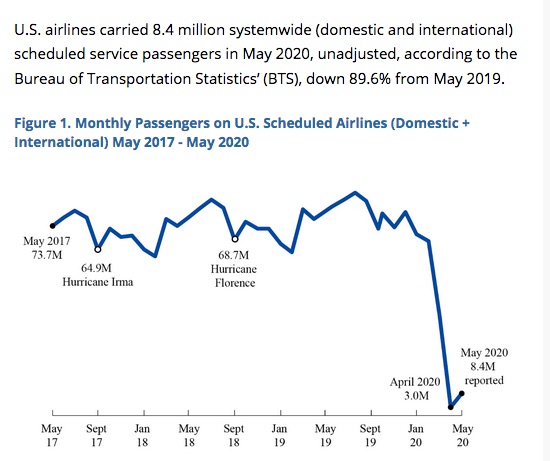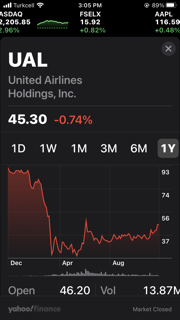Order McKenzie books online with a credit card
Bring Jamie to your school or district for a great workshop
November Issue
Vol 31|No 2|November 2020
It is very challenging to predict what is coming.
The GOAL OF SCENARIO PLANNINGThere are many Web sites providing examples of how scenario planning works. They will prove most useful to teachers. They are mostly too challenging for middle school and high school students.
What careers and industries will be most promising and rewarding in the decades ahead?Given the impact of lockdowns on many industries, which ones will recover, which will thrive and which will wither?A class might divide up the various sectors of the economy and generate scenarios for each one to cover the next 10-15 years — worst case scenario, best case scenario and middle of the road scenario.
 © J. McKenzie
Prediction Following Black Swan EventsPredicting the future is difficult even in normal times, but Black Swan Events like COVID-19 make prediction and forecasting even more difficult. Nassim Nicholas Taleb' book, The Black Swan, defines such events as follows:First, it is an outlier, as it lies outside the realm of regular expectations, because nothing in the past can convincingly point to its possibility. Second, it carries an extreme 'impact.' Third, in spite of its outlier status, human nature makes us concoct explanations for its occurrence after the fact, making it explainable and predictable.Some observers (James Pethokoukis) have suggested that COVID-19 or something like it was entirely predictable and therefore not a true Black Swan Event -- as governments should not be forgiven for their lack of preparation and foresight. Regardless, COVID-19 clearly has had an extreme impact on many aspects of life and commerce, disrupting the normal flow of business and nearly all activities so that one cannot reliably make simple projetions of past trends into the future. Look at the recent history up to 2019 of airline passengers as reported by the U.S. Department of Transportation in the chart below. Except for a decline during the recession of 2008-2009, the trend was definitely up. 
Source Data is not available for the entire year of 2020, but the numbers for May are striking. 
The chart below shows monthly declines in passenger traffic since the pandemic and border closures started to influence travel decisions.  With such gigantic loss of revenue, the airlines were soon thinking of laying off thousands of employees, but Congress stepped in with funding through October 1 to make that unnecessary (the CARES Act Payroll Support Program). With Congress unable to agree upon a continuation of that support, the airlines were forced to go ahead with the furloughs, with United and American Airlines sending 32,000 employees home. These layoffs were expected to have a ripple effect through other industries as those workers would have to sharply limit any spending. Can the Airline Industry Recover to 2019 Levels?To illustrate the scenario planning process, we will follow a team of students roleplaying the decision-making of a United Airlines corporate team looking into the next decade just as the White House changes hands and the composition of the U.S. Senate is not yet decided.
1. Brainstorm Future ScenariosThe student team starts off by listing various possibilities that might occur during 2021 forward. They try to include both optimistic and pessimistic developments.
2. Identify Trends and Driving ForcesThe student team sees that the customers of airlines make travel decisions based on several factors. Fear can sharply reduce their willingness to fly but there are other factors that shape their choices, such as a desire to make important connections with family or with business associates. Face-to-face meetings have long prompted many to climb onto airplanes. In addition, exploration of foreign destinations -- tourism -- has been an important driving force. The team considers the possibility that the forces driving travel numbers in 2019 will kick back in once fear is put aside.The team looks at what happened to air travel after the events of 9/11. In the August preceding 9/11, the airline industry experienced what was then a record high in the number of airline passengers for a given month when 65.4 million travelers took to the air. After 9/11, that number trailed off dramatically, and it took nearly 3 years, until July 2004, for the industry to match and finally surpass the pre 9/11 levels. (Source = Bureau of Transportation Statistics)The team considers the possibility that many companies may rethink the whole idea of supplying office space to workers since they have done well with employees working from home. They may also look for cost savings by replacing conventions and face-to-face business meetings with virtual meetings via Zoom and other technologies. Future demand for air travel may be undercut by these shifts. They see leisure travel and family-related travel to be more resilient if people feel safe. 3. Create a Scenario Planning TemplateIn many of the scenario planning models, the team will create a template with the two main driving forces. The student team picks "fear of the virus" as one force and "government relief" as the other, resulting in four possibilities:
 It is up to the teacher whether the team should proceed through the final steps in this process as outlined by Amanda Athuraliya. A true corporate team would expand on the initial scenarios and suggest detailed action plans for United to pursue while trying to recover from the pandemic. Lobbying Congress would be a top priority, certainly, and the airline would focus its efforts on making potential customers feel safe flying. Speeding the vaccination of the population would be desirable but not something an airline might influence. Ultimately, the goal of this unit is the strengthening of students' ability to look ahead during uncertain times and make reasonable predictions about what might be coming next. Interested in a career as a commercial pilot or a flight attendant? This might not be the best decade for such job opportunities. Written materials, art work and photography on this site are copyrighted by Jamie McKenzie and other writers, artists and photographers. Written materials on these pages may be distributed and duplicated if unchanged in format and content in hard copy only by school districts and universities provided there is no charge to the recipient. They may also be e-mailed from person to person. All other uses, transmissions and duplications are prohibited unless permission is granted expressly. Showing these pages remotely through frames is not permitted. FNO is applying for formal copyright registration for articles.
|



